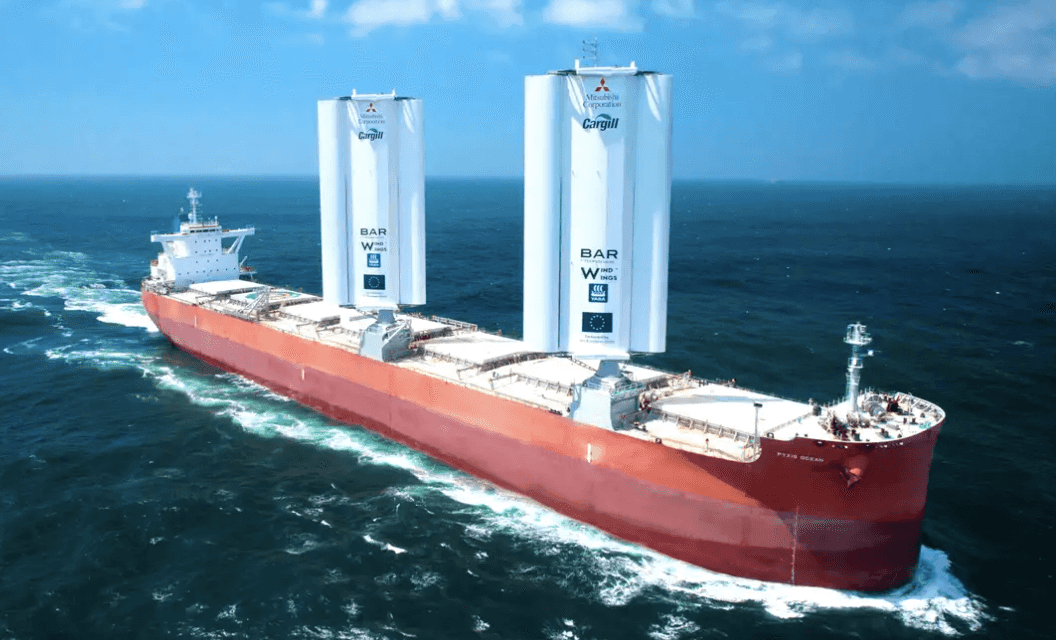The global shipping industry is going back to the future

Image: Cargill
In the late 19th century, the global shipping industry began transitioning away from using sails as a method of propulsion, opting instead for steam engines and other more reliable options.
But now, many shipping firms are going back to their roots.
A group of companies led by shipping giant Cargill, America’s largest private company by revenue, this week launched the first voyage of a cargo ship equipped with custom-made giant sails to reduce its fuel consumption and carbon emissions.
If successful, the new technology could sharply reduce the carbon footprint of the international shipping industry, which currently accounts for 3% of all global emissions (a figure higher than the airline industry).
🤔 How does it work?... Each of the sails, called WindWings, are 123 feet tall and made from the same material as wind turbines to increase their durability. When in use, the WindWings automatically rotate to generate propulsion in the same direction the ship is moving. The sails can also be folded down and stored whenever the ship is in port.
According to the sail’s creator, BAR Technologies:
- One WindWing saves an average of 1.7 tons of fuel per day, thanks to the extra propulsion it generates; that’s equivalent to about 10% of an average ship’s overall fuel consumption and CO2 emissions.
- Multiple WindWings can fit on the decks of most ships, further decreasing fuel consumption and emissions by an additional 10% per sail that’s onboard.
✋ Yes, but… Cargill isn’t the first shipping giant to embrace their inner pirate and hoist the Jolly Roger to improve fuel efficiency – and previous attempts haven’t exactly gone smoothly.
Danish company Maersk, the world’s second-largest container shipping group, scrapped its sail program in 2021 after an analysis found it would take roughly a decade for the fuel savings to surpass the cost of installing and maintaining the sails.
🚢 Zoom out: UN diplomats agreed last month to reach net-zero emissions within the global shipping industry “by or around” 2050. The outcome, which was criticized by some rights groups as being too lenient, came after a group of nations led by China objected to any stronger climate-focused goals.
Share this!
Recent Science & Emerging Tech stories

Science & Emerging Tech
| August 17, 2023For all the promise of AI, there are still a few kinks to work out
🤖💥 Take a look inside the recent White House-organized hacking contest to break AI

Science & Emerging Tech
| August 17, 2023That'll do, pig
🏥 US scientists announced breakthroughs in two separate attempts to create genetically modified pig kidneys that function normally when transplanted into human patients.

Science & Emerging Tech
| August 10, 2023Superconductor breakthrough or nah? An electric claim has energized the scientific community
📝⚡ Late last month, a team of Korean scientists published two preprint studies claiming to have developed LK-99, a material that can act as a superconductor at room temperature and ambient pressure – one of the holy grails of physics. This kicked off a race to reproduce the results.
You've made it this far...
Let's make our relationship official, no 💍 or elaborate proposal required. Learn and stay entertained, for free.👇
All of our news is 100% free and you can unsubscribe anytime; the quiz takes ~10 seconds to complete